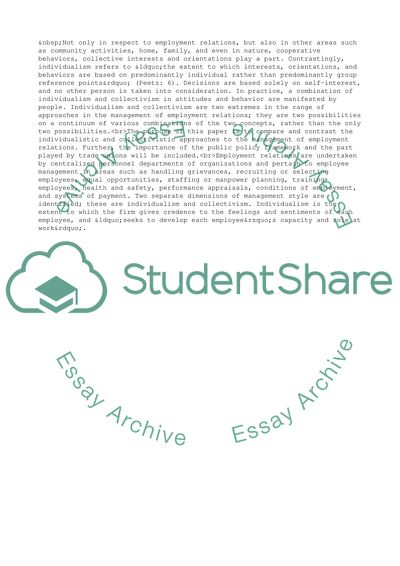Cite this document
(The Contrast Between Individualistic And Collective Approaches Coursework, n.d.)
The Contrast Between Individualistic And Collective Approaches Coursework. Retrieved from https://studentshare.org/management/1715588-discuss-the-contrast-between-an-individualistic-and-collectivist-approach-to-the-management-of-employment-relations-aprroach-the-discussion-from-the-standpoint
The Contrast Between Individualistic And Collective Approaches Coursework. Retrieved from https://studentshare.org/management/1715588-discuss-the-contrast-between-an-individualistic-and-collectivist-approach-to-the-management-of-employment-relations-aprroach-the-discussion-from-the-standpoint
(The Contrast Between Individualistic And Collective Approaches Coursework)
The Contrast Between Individualistic And Collective Approaches Coursework. https://studentshare.org/management/1715588-discuss-the-contrast-between-an-individualistic-and-collectivist-approach-to-the-management-of-employment-relations-aprroach-the-discussion-from-the-standpoint.
The Contrast Between Individualistic And Collective Approaches Coursework. https://studentshare.org/management/1715588-discuss-the-contrast-between-an-individualistic-and-collectivist-approach-to-the-management-of-employment-relations-aprroach-the-discussion-from-the-standpoint.
“The Contrast Between Individualistic And Collective Approaches Coursework”, n.d. https://studentshare.org/management/1715588-discuss-the-contrast-between-an-individualistic-and-collectivist-approach-to-the-management-of-employment-relations-aprroach-the-discussion-from-the-standpoint.


